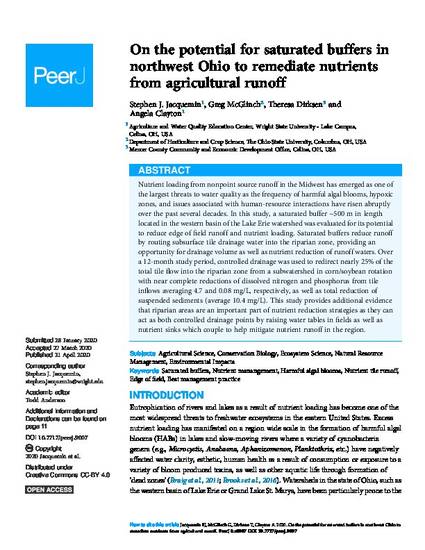
Nutrient loading from nonpoint source runoff in the Midwest has emerged as one of the largest threats to water quality as the frequency of harmful algal blooms, hypoxic zones, and issues associated with human-resource interactions have risen abruptly over the past several decades. In this study, a saturated buffer ~500 m in length located in the western basin of the Lake Erie watershed was evaluated for its potential to reduce edge of field runoff and nutrient loading. Saturated buffers reduce runoff by routing subsurface tile drainage water into the riparian zone, providing an opportunity for drainage volume as well as nutrient reduction of runoff waters. Over a 12-month study period, controlled drainage was used to redirect nearly 25% of the total tile flow into the riparian zone from a subwatershed in corn/soybean rotation with near complete reductions of dissolved nitrogen and phosphorus from tile inflows averaging 4.7 and 0.08 mg/L, respectively, as well as total reduction of suspended sediments (average 10.4 mg/L). This study provides additional evidence that riparian areas are an important part of nutrient reduction strategies as they can act as both controlled drainage points by raising water tables in fields as well as nutrient sinks which couple to help mitigate nutrient runoff in the region.
Available at: http://works.bepress.com/stephen-jacquemin/37/

Copyright 2020 Jacquemin et al. Distributed under Creative Commons CC-BY 4.0